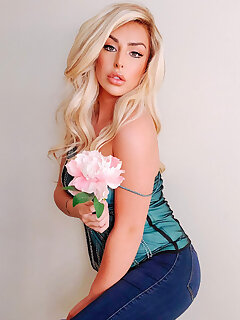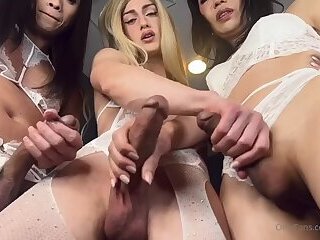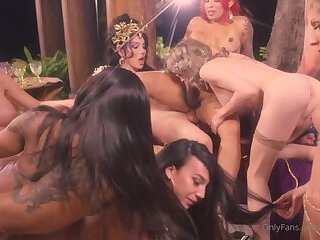An Appreciation Part 3
Cynthia A. Freeland's discussion of the androgynous nature of Victor von Frankenstein's monster (in The Naked and the Undead: Evil and the Appeal of Horror), sheds light on my topic, shemales.
Building upon the opposition of supposedly "masculine" and feminine traits listed below, Freeland argues, quite convincingly, that Frankenstein's "Creature," despite being described as a male and desiring that his creator build him a woman of his own is, according to the very traits themselves, at least as much feminine as masculine:
MALE—FEMALE
Culture—nature
Reason—nature
Mind—body
Master—slave
Reason—matter (physicality)
Rationality—animality (nature)
Human—nature (non-human)
Civilized—primitive (nature)
Production—reproduction (nature)
Self—other
According to Freeland, "the Creature symbolizes animality, primitiveness, and physicality," whereas the "excessively male" Frankenstein himself "represents the forces of civilization, rationality, production, and culture." The Creature is also "other," ostracized as he is from human camaraderie, whereas the scientist "is part of a happy family and has prospects of marriage."
Freeland asks, rather pointedly, whether the monster can truly be regarded as male, adding that it "begins with a good and innocent nature," which contradicts the idea that it is wild or "primitive," and is "identified with the feminine in his desire for family and social bonds" and "may even be a personification of Nature's female power." Frankenstein himself, on the other hand, is obviously associated with many of the qualities of masculinity, such as culture, rationality, mind, mastery, humanity, civilization, production, and selfhood.
Indeed, Freeland declares, "We could even propose that the Creature's very monstrousness is a result of his gender and moral indeterminacy.
Advertisment
- Dildo+Pre-cum XD
- AB106 Conpletely domesticated kinky sissy slave- face sitting edging 驯化完全人妖母狗奴隶 - 颜面骑乘 榨精 寸止
- ladyboy13f
- Emily blue dirty talking and riding dildo
- Sexy Petite Nerdy TS Girl in Glasses Needs Homework Help
- Your cock could be next
- Joanie - Ribbon Sculpting Body Set
- Your small dick Girlfriend teasing you while you are at work
- horny bitch dildo play
- Mirror POV












































![[2024-04-21] Sasha_Vesmus](https://cc.ashemaletube2.com/thumbs/ast-320x240/2024-04/9c/ae6dece9c37cd235dc70f64ab2d1de1a9.mp4-320x240-5.jpg)




















